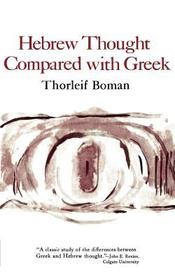
Handbook of Phonetics and Phonology of Modern Iranian Languages
Sorozatcím: Springer Handbooks in Languages and Linguistics;
-
12% KEDVEZMÉNY?
- A kedvezmény csak az 'Értesítés a kedvenc témákról' hírlevelünk címzettjeinek rendeléseire érvényes.
- Kiadói listaár EUR 320.99
-
133 130 Ft (126 791 Ft + 5% áfa)
Az ár azért becsült, mert a rendelés pillanatában nem lehet pontosan tudni, hogy a beérkezéskor milyen lesz a forint árfolyama az adott termék eredeti devizájához képest. Ha a forint romlana, kissé többet, ha javulna, kissé kevesebbet kell majd fizetnie.
- Kedvezmény(ek) 12% (cc. 15 976 Ft off)
- Kedvezményes ár 117 155 Ft (111 576 Ft + 5% áfa)
Iratkozzon fel most és részesüljön kedvezőbb árainkból!
Feliratkozom
133 130 Ft

Beszerezhetőség
Még nem jelent meg, de rendelhető. A megjelenéstől számított néhány héten belül megérkezik.
Why don't you give exact delivery time?
A beszerzés időigényét az eddigi tapasztalatokra alapozva adjuk meg. Azért becsült, mert a terméket külföldről hozzuk be, így a kiadó kiszolgálásának pillanatnyi gyorsaságától is függ. A megadottnál gyorsabb és lassabb szállítás is elképzelhető, de mindent megteszünk, hogy Ön a lehető leghamarabb jusson hozzá a termékhez.
A termék adatai:
- Kiadó Springer Nature Singapore
- Megjelenés dátuma 2025. december 2.
- Kötetek száma 1 pieces, Book
- ISBN 9789819503827
- Kötéstípus Keménykötés
- Terjedelem730 oldal
- Méret 235x155 mm
- Nyelv angol
- Illusztrációk XL, 730 p. 120 illus., 65 illus. in color. 700
Kategóriák
Hosszú leírás:
"
This handbook presents a comprehensive and up-to-date survey of phonetic and phonological research on Iranian languages and dialects. Iranian languages ? spoken by tens of millions across a wide geographical area extending from the Middle East to Central and South Asia, and diaspora communities ? exhibit considerable variation in phonetic detail and phonological structure. Bringing together leading scholars from around the world, this handbook provides original empirical findings, theoretical insights, and experimental results that explore various aspects of sound systems of Iranian languages and dialects. Until now, much of the scholarly work on Iranian languages has focused on historical and comparative linguistics of Persian, or the pedagogical aspects of mainly Persian. This handbook takes as its central focus the systematic study of phonological processes and sound systems across a wide range of Iranian languages in order to highlight the unexplored phonetic and phonological details of contemporary Iranian languages. The book fills that critical gap, offering a thematic and typologically informed approach. The handbook also responds to a growing demand for interdisciplinary work. Contributions bridge traditional phonological theory with applied domains such as first / second language acquisition, speech therapy, and poetic meter. It serves multiple audiences that include theoretical linguists, speech clinicians, language educators, and typologists interested in the sound systems of Iranian languages and dialects. In doing so, this book stimulates future research, promotes cross-linguistic comparison, and fosters greater attention to the sound systems of Iranian languages in academic, clinical, and educational settings.
?This handbook brings together current research on the phonetics and phonology of the Modern Iranian languages to provide a comprehensive overview of the main phonetic and phonological phenomena in these languages. These two fields, like other areas of linguistics, have undergone rapid advances in the past decade due to developments in experimental methods and phonological models. These changes render Iranian languages and their varieties a promising area of research which can make a significant contribution to general linguistic knowledge, and advance our understanding of cross-linguistic variation. The spread of Iranian language family is wide ranging, from Central Turkey in the west to the Uygur region of China in the east. In the North, it includes Ossetic and Yaghnobi, while in the South it includes languages such as Kumzari spoken in part of Oman. Despite the wide range of Iranian languages, only four of these languages are the official languages of the country in whichthey are spoken: Persian, Dari, Tajik, and Pashto. As a result, many Iranian languages have not been the prime goal of organizations/agencies which try to document and preserve languages. This handbook offers readers a state-of-the-art report of research in the field with a special emphasis on these less-studied Iranian languages and varieties. Relevant to linguists working in phonetics, both in Iranian and other languages, this book provides an overview of cutting edge and current linguistic knowledge." TöbbTartalomjegyzék:
Consonantal systems and processes.- Vowel systems and processes.- Rhythm, intonation, prosody, and stress.- Metrical systems.-Sound systems of lesser-described Iranian dialects.
Több




